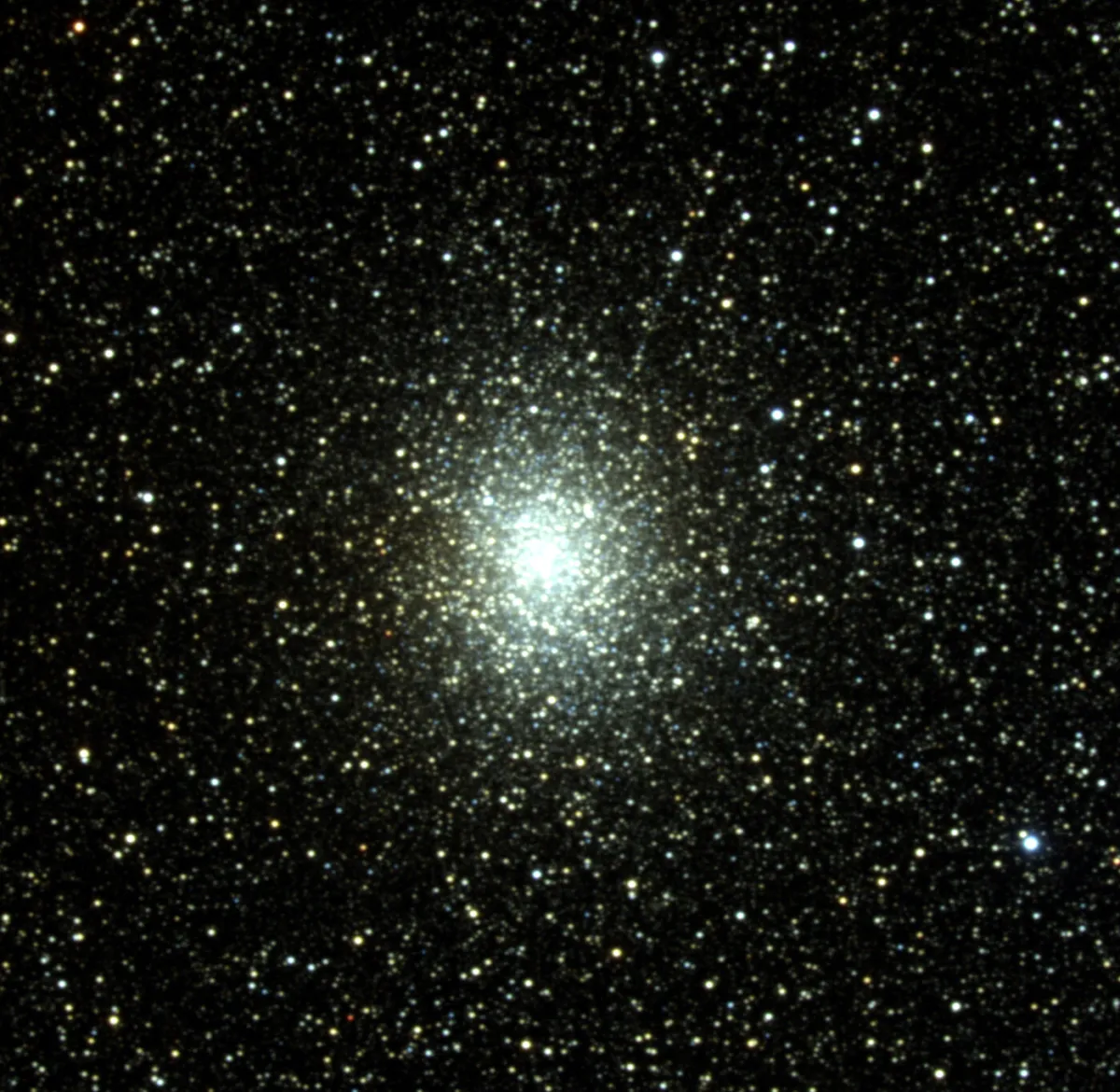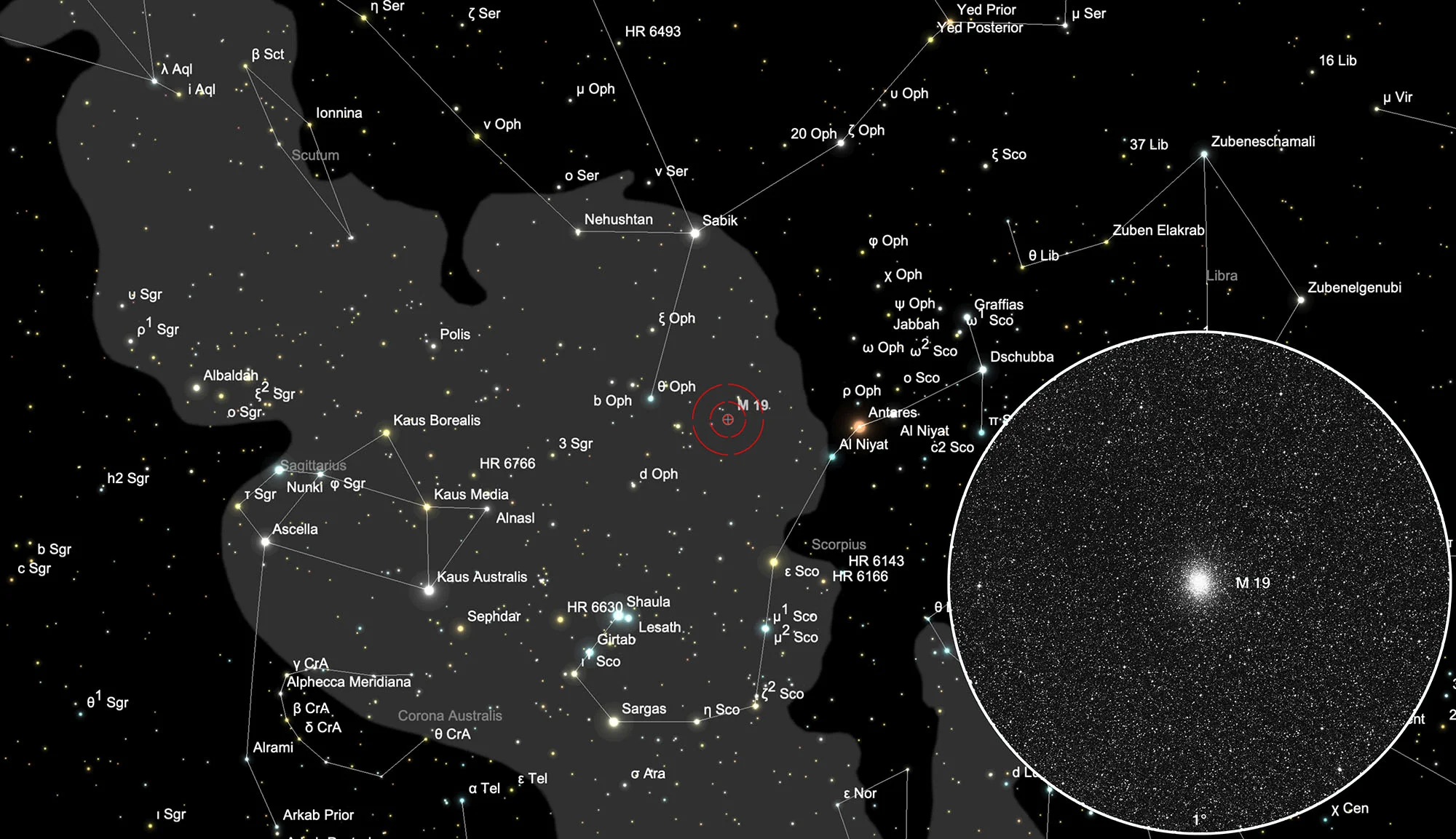Globular Cluster Messier 19

History
This globular was discovered on 5 June 1764 by Charles Messier. He added it as 19th object to his list and wrote about it: «Nebula without stars, on the parallel of Antares, between Scorpius and the right foot of Ophiuchus: this nebula is round; it was seen very clearly with an ordinary three-and-a-half-foot telescope; the nearest known star to this nebula is the twenty-eighth of Ophiuchus, 6th magnitude, according to Flamsteed. Re-examined on 22 March 1781.» [281]
About two decades later Sir William Herschel observed the objects found Messier and recognized the true nature of many of these «nebulae». He wrote: «The excellent collection of nebulae and clusters of stars which has lately been given in the Connoissance des Temps for 1783 and 1784, leads me next to a subject which, indeed, must open a view of the heavens. As soon as the first of these volumes came to my hands, I applied my former 20-feet reflector of 12 inches aperture to them; and saw, with the greatest pleasure, that most of the nebulae, which I had an opportunity of examining in proper situations, yielded to the force of light and power, and were resolved into stars. For instance the 2d, 5, 6, 10, 12, 13, 14, 15, 16, 19, 22, 24, 28, 30, 31, 37, 51, 52, 53, 55, 56, 62, 65, 66, 67, 71, 72, 74, 92, all which are said to be nebulae without stars, have either plainly appeared to be noting but stars, or at least to contain stars, and to shew every other indication of consisting of them entirely.» [27]
Physical Properties
The vicinity of M 19 as seen by us is very rich in stars and appears peppered with countless small stars in our Milky Way. The globular cluster is located near the central bulge of our galaxy. The distance from the galactic centre is estimated to be around 3000 light years. The cluster appears to be a little further away than M 10 or M 12. The light is also weakened by interstellar dark dust, which makes exact distance measurements difficult. Published distances vary from 20'000 to 30'000 light years. M 19 moves away from the solar system at a radial speed of about 100 km/s.
M 19 belongs to the flattened globular clusters. It shows an elliptical outline. H. Shapley estimated that there are about twice as many stars along the long axis as there are along the short axis. The integrated spectral type is indicated with F5. [4]
| Designation | NGC 6273 |
| Type | GCL (VIII) |
| Right Ascension (J2000.0) | 17h 02m 37.7s |
| Declination (J2000.0) | -26° 16' 03" |
| Diameter | 17 arcmin |
| Visual magnitude | 6.8 mag |
| Metric Distance | 8.800 kpc |
| Dreyer Description | globular, vB, L, R, vCM, rrr, st 16 |
| Identification, Remarks | h 1975=3663; GC 4264; M 19; GCL 52; ESO 518-SC7 |
Finder Chart
The globular cluster Messier 19 is located in the constellation Ophiuchus (Serpent Bearer) and is best observed in the months February to November.
